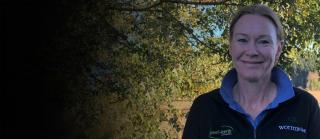Search results
Displaying 91 - 100 results of 134
- … anaerobically minerablisable nitrogen (the amount of nitrogen potentially available for plant uptake) and reduced: facial eczema spore counts weed content. There was reduced nutritive value in the deferred paddocks during the deferred period, …
- PodcastGood management practice for winter grazing: Ross Monaghan, Soil Scientist, AgResearch …

- Experts share tips on catchment legalities and telling your rural story …

- B+LNZ demands pause on biodiversity proposals and a review into impact of environmental rules on primary sector …

- Celebrating the unrecognised custodians of the environment – Kiwi sheep and beef farmers …

- Don’t get caught with worms you can’t kill …

- PageWhich paddocks will you be using for next year’s winter feed crops? To ensure the best environmental and animal welfare outcomes, B+LNZ has compiled a list of three critical factors to consider when selecting paddocks for growing winter feed crops. … 1. Understand the risks of winter grazing Winter grazing can increase the risk of sediment, harmful bacteria and nutrients ending up in water. Reducing this risk begins with paddock selection. Paddocks with water flowing through or over the soil …
- Spreading the word about our low carbon footprint …

- Farmer meeting breaks down climate science …

- Faecal egg counts, larval cultures and other diagnostic methods can be used to assess the level of worm infestation in stock, and whether drench treatments have been effective. … Worm diagnostics …